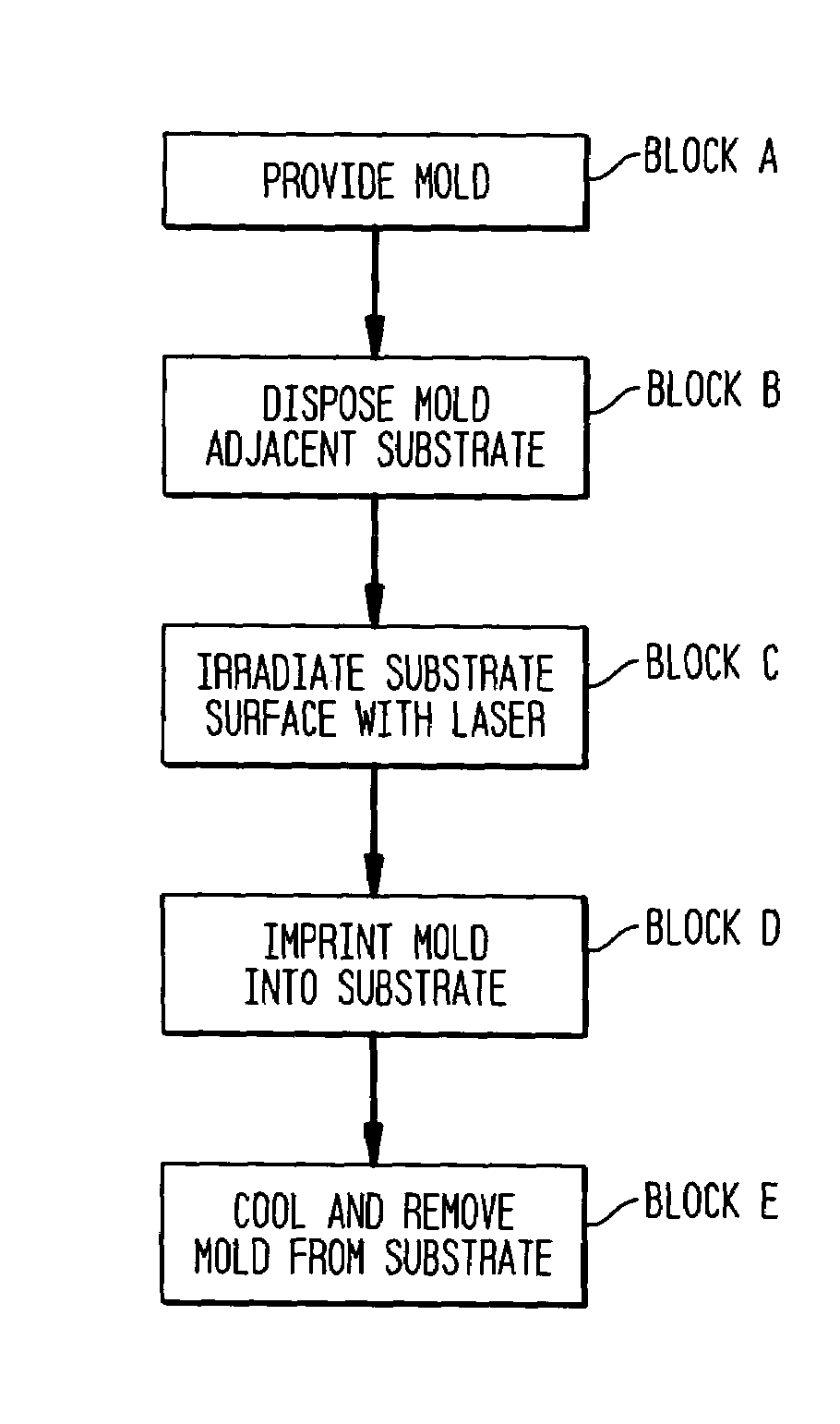Laser assisted direct imprint lithography
a technology of imprint lithography and laser, which is applied in the field of imprint lithography, can solve the problems of increasing optical lithography difficulty, limited resolution by light wavelength, and relatively slow steps in developing and removing resists
- Summary
- Abstract
- Description
- Claims
- Application Information
AI Technical Summary
Problems solved by technology
Method used
Image
Examples
example
[0037]A series of experiments were conducted using molds having the following three patterns: (1) grating of 140 linewidth, 110 nm depth, and 300 nm period; (2) lines 10 nm wide and 15 nm deep, which were created due to the trenching effect in reactive ion etching during mold fabrication; and (3) rectangles of length and width in tens of microns and a depth of 110 nm. All three patterns were imprinted directly in silicon in the same LADI process.
[0038]First, a quartz mold, as described above, was brought into contact with a silicon substrate. Two large press plates were used to supply the force which pressed the mold against the substrate. The silicon wafer was placed on the lower plate with the mold on top of the wafer. The top plate, also made of fused quartz and hence transparent to the laser beam, was placed on top of the mold. The two plates were pressed together by increasing the pressure provided by screws between the two large plates. The preferred level of pressure applied ...
PUM
| Property | Measurement | Unit |
|---|---|---|
| Time | aaaaa | aaaaa |
| Time | aaaaa | aaaaa |
| Length | aaaaa | aaaaa |
Abstract
Description
Claims
Application Information
 Login to View More
Login to View More - R&D
- Intellectual Property
- Life Sciences
- Materials
- Tech Scout
- Unparalleled Data Quality
- Higher Quality Content
- 60% Fewer Hallucinations
Browse by: Latest US Patents, China's latest patents, Technical Efficacy Thesaurus, Application Domain, Technology Topic, Popular Technical Reports.
© 2025 PatSnap. All rights reserved.Legal|Privacy policy|Modern Slavery Act Transparency Statement|Sitemap|About US| Contact US: help@patsnap.com



